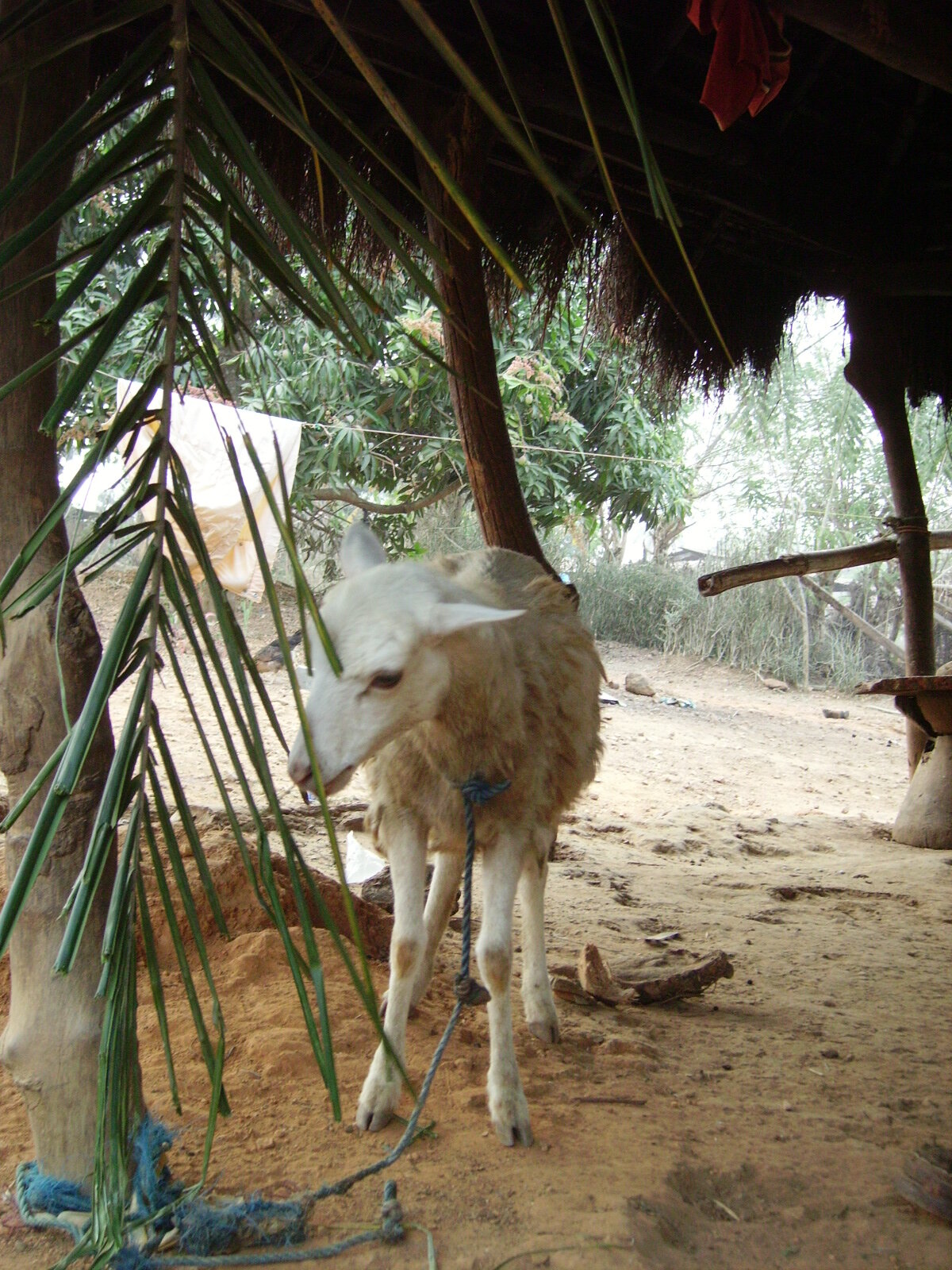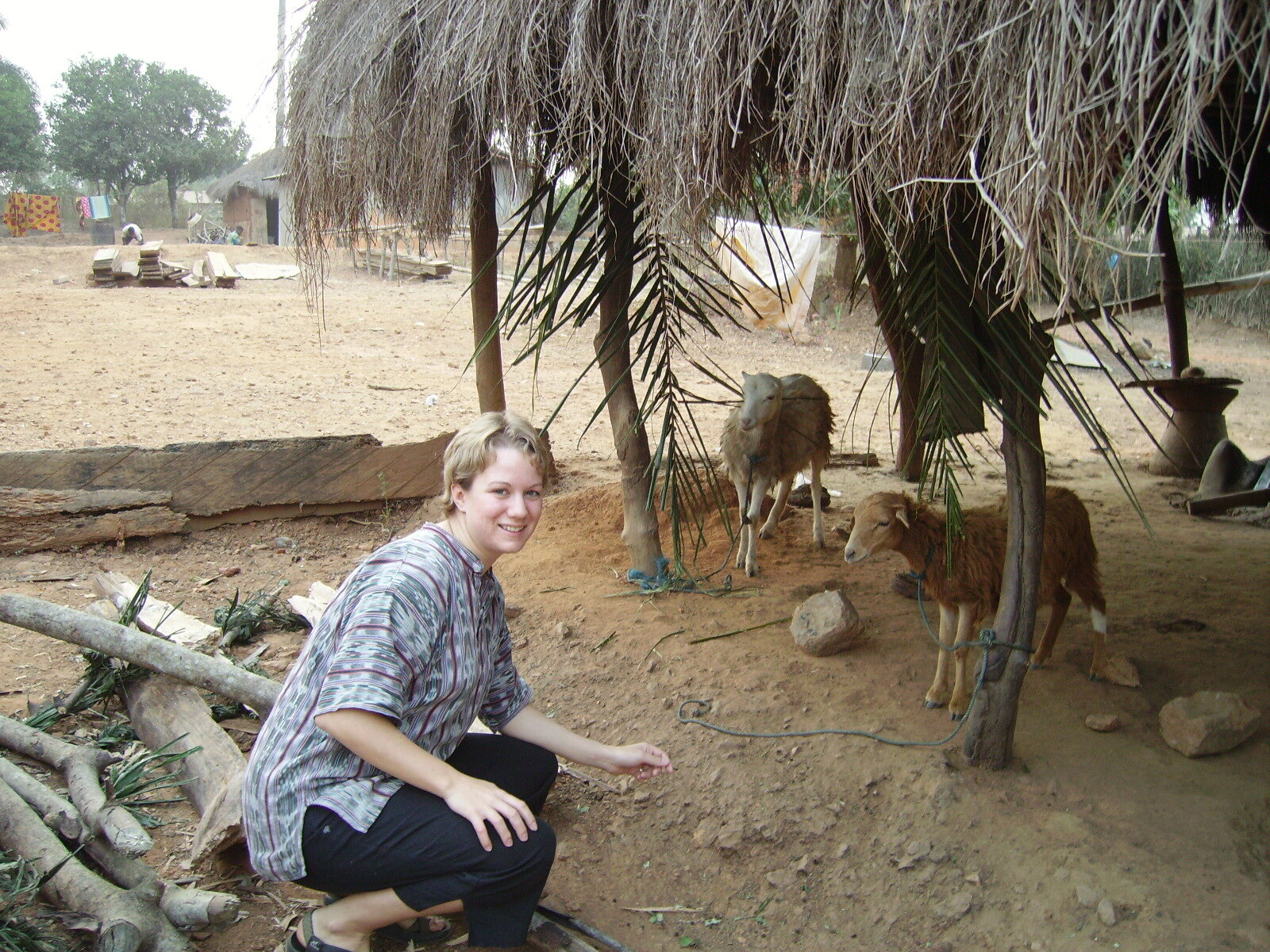My only break from Morocco during Peace Corps, was a visit to Togo to see my friend Jesselyn, who was in Peace Corps there.






While many of my fellow volunteers here in Morocco when home to the US for Christmas I had lunch in Marrakech with the other volunteer in my region who stayed behind. It was a sunny day and we ate on the upstairs terrace at Kozy Bar, one of my favorite places in Marrakech.
The next day the real adventure began. I went to Casablanca and took a plane to Lomé, Togo. My friend Jesselyn, who I went to high school with in Boise, is a Peace Corps volunteer in Togo and has been there as long as I have been in Morocco. Thankfully, she met me at the airport, since I was not only tired (I got in at about 2am) but in a bit of shock at the change of scenery.
Togo is warm. Much warmer than Morocco at this time of year. The people there speak French. I have come to associate French with harassment and tourism, neither of which I want much to do with where I live in Morocco. But Togolese French is a much slower, lilting kind of French, with a distinctive rhythm. I liked it.
Lomé was covered with Christmas lights and windows painted with “Joyeux Noel” and “Bonne Année”. After my difficulties trying to explain to Moroccans that the 25th of December is a different holiday from the 31st, and that only one is considered religious, I was overwhelmed by the plastic pine trees and people wishing me “Bonne Fête!” Togolese not only know what these holidays are, they celebrate them too. Amazing.
Jesselyn looked pretty surprised by the whole show too. She lives in a very small village (we’ll get to that later) and it was only her second visit down to the bustling metropolis of Lomé. We spent a couple days in the capital getting my visa straightened out and shopping for things she can’t get in village. I got to meet her country director, George, who was a very friendly and welcoming person. In the evenings we invariable ran into other volunteers, since there are very few places foreigners hang out in and very few foreigners at all in Lomé.
After the city, we went to stay with her host family from training, which she had in Govié. We only stayed one night, despite the kind hospitality of the family. In the morning we got up as early as we could, which was still hours after every other person in the village had woken up, and set off on a hike. Govié isn’t a big place, but it does have some nice waterfalls, if you know where to look. Early that afternoon we crammed in a sort of van to get to the next stop: Atakpamé. It was the stereotypical African sort of transportation: crowded and friendly, stopping every few miles as people squeezed out and even more piled in to replace them.
Atakpamé is the big city in the region and Peace Corps has a house there that volunteers can stay in for free. I was pretty amazed by the house and by the freedom volunteers there have to travel around their region and stay in the house. It’s very different from Peace Corps Morocco.
And yet, the volunteers themselves weren’t all that different. They come to the city to get electricity and running water. They charge their cell phones, catch up on email, eat foods they can’t find in village, chat in English with other Americans and watch marathons of TV shows on DVD. The three days I spent there were devoted to Grey’s Anatomy, interrupted only on New Year’s so the group could go out to a restaurant and then to a bar where we rang in 2007 with a large group of dancing Togolese.
We had planned to go to Jess’s village on New Year’s Day, but heard there was no transportation since it was a holiday. I happily settled in on the couch and continued the Grey’s Anatomy marathon. The next day we had to face reality and venture out of our little American bubble. The sun was bright, but the air thick with dust and smoke. I managed to pick the “cold” season to visit Togo. I was very comfortable in light pants and a tank top, which made me glad I wasn’t there when it was “hot.”
This is the season dust blows down from the north. It was apparently a big nuisance, but coming from Morocco’s sand storms, I really wasn’t impressed. However, winter is also the burning season. The smoke compounds the dust effect in the air and gives the countryside a mystic air. I was reminded of the Blair Witch Project movie and tried not to think about the voodoo that many people in Togo claim not to believe in, though I saw plenty of carved wooden voodoo dolls and all sorts of odd ingredients and dried animals for sale on the streets of Atakpamé. I looked across the hills and tried to think of the Smokey Mountains or the Blue Mountains: some place where haze is associated with beauty and not spooky rituals.
In Jess’s village I got the full tour in all of three minutes. I met all the important people, listening to Jess rattle off a string of greetings in the local language before she introduced me in French. Volunteers in Togo face a big challenge with the local languages, not because they’re hard to learn, but because there are so many of them. Jesselyn works in several surrounding villages, which she goes back and forth to on her Peace Corps bike (with helmet). Almost each one has a different language. Togolese in town speak to each other in their native language, but while we were on the road I noticed that traveling Togolese often speak to each other in French. Any educated person there speaks French and it is sometimes the only way people from different towns can communicate. (Mrs. Trebby’s students at Les Bois Junior High take note: French is important).
The village was beautiful and I am still jealous of Jess’s view out her windows, but I am now so incredibly grateful that I get to go back to Morocco and have electricity and running water. Not only can I turn on a tap in my house, I can drink what comes out of it! I thought living without water and electricity wouldn’t really be so bad. I like camping. But when I go camping in Idaho I get to go home afterwards to a hot shower and refrigerator.
Ever the hostess, Jess made sure I had a quintessential Togolese meal my last night. We walked to the store in town and bought a giant cassava root and some ingredients for sauce and took them back to her neighbors. She lives in a compound, with her two room home attached on the end of a family’s row of rooms. It is a picturesque compound, with traditional thatched roof buildings and a central outdoor kitchen area, surrounded by wild banana and papaya trees.
The women cut the cassava into chunks, boiled them then threw them in the giant hollowed out tree trunk that serves as their fufu mortar. The wood is heavy and polished with use. It was dark by this time (hence no photos) and I watched two women with long heavy sticks pounding the cassava into fufu. It was the idyllic image I had seen so many times in travel magazines: wrapped in colorful print pagnes, babies tied to their backs, the women raised the heavy sticks vertically and brought them down heavily with a satisfying schtlock-schrup-schplook noise, rhythmically pounding the root into a smooth paste. Another woman held up an old gas lantern, a little girl half hiding in the folds of her pagne, alternately staring at me and looking up to her mother for reassurance. In the flickering light the fufu was finally proclaimed ready and they took the pot of sauce off the fire for my last meal in Togo.
[My real opinion: fufu is a bland, glutinous mass, only made edible by a tasty sauce poured liberally over it. I was surprised by the lack of food in the village and it seems to me that cassava is eaten because that’s what’s available. Apparently pounding it into a paste makes it more digestible. Either way, it was quite filling and sat in my stomach a long time. At least I didn’t go hungry while I was there.]






